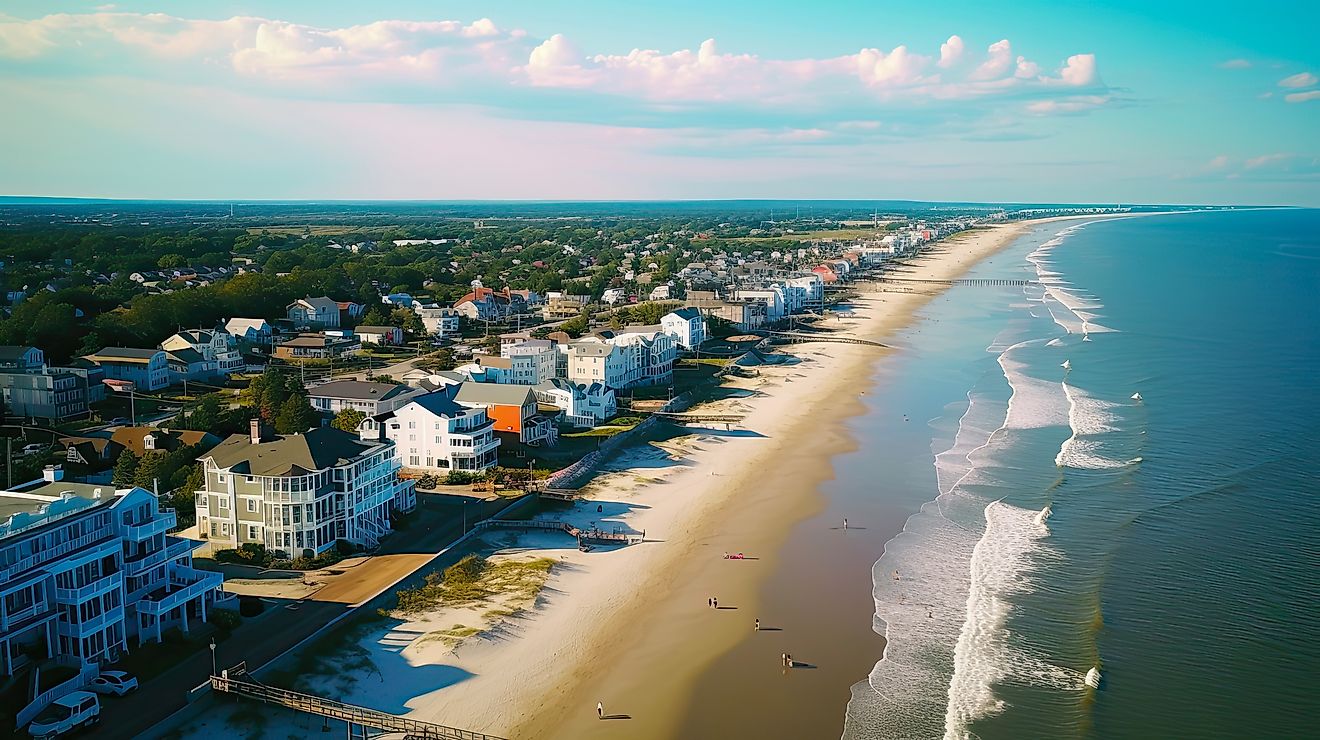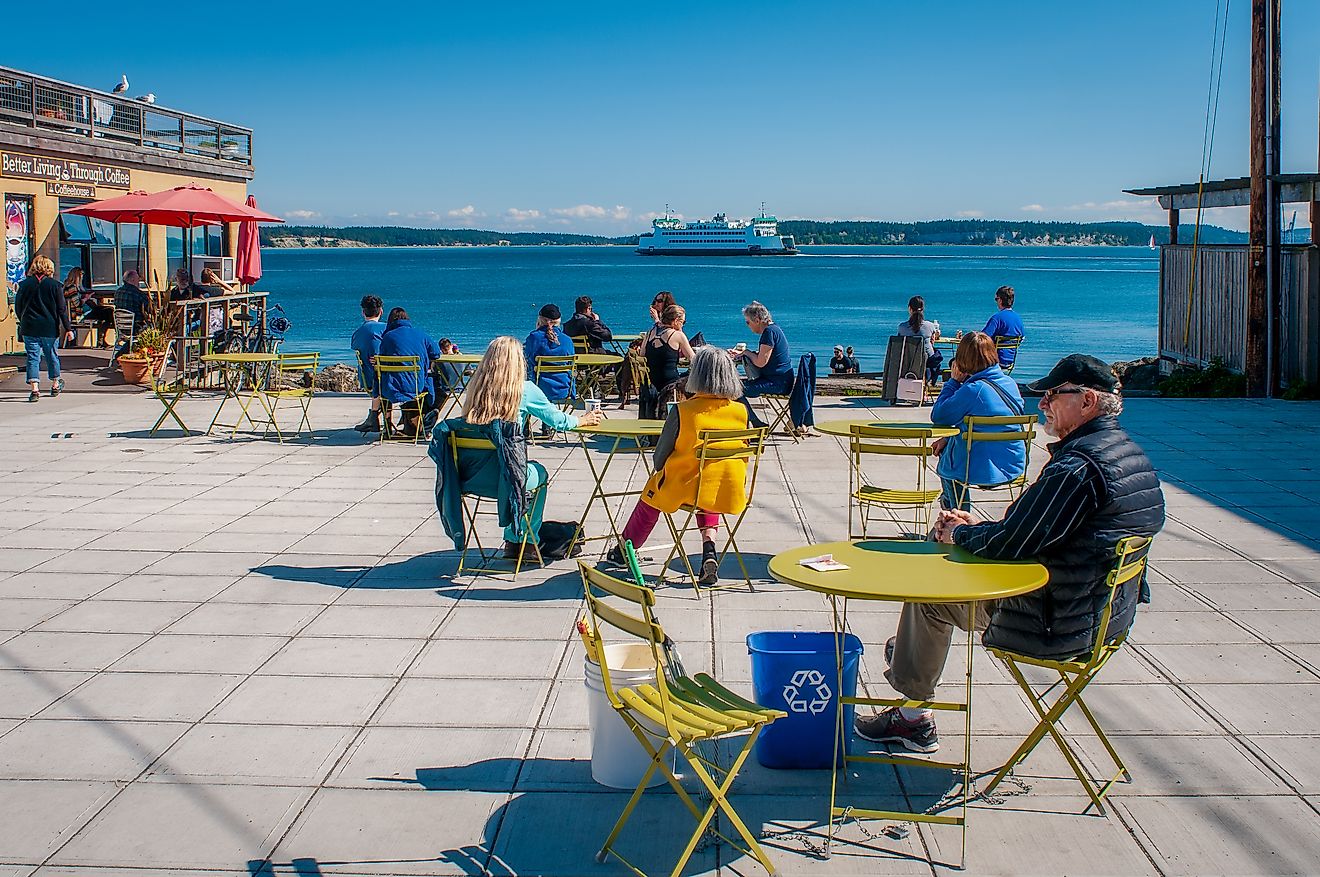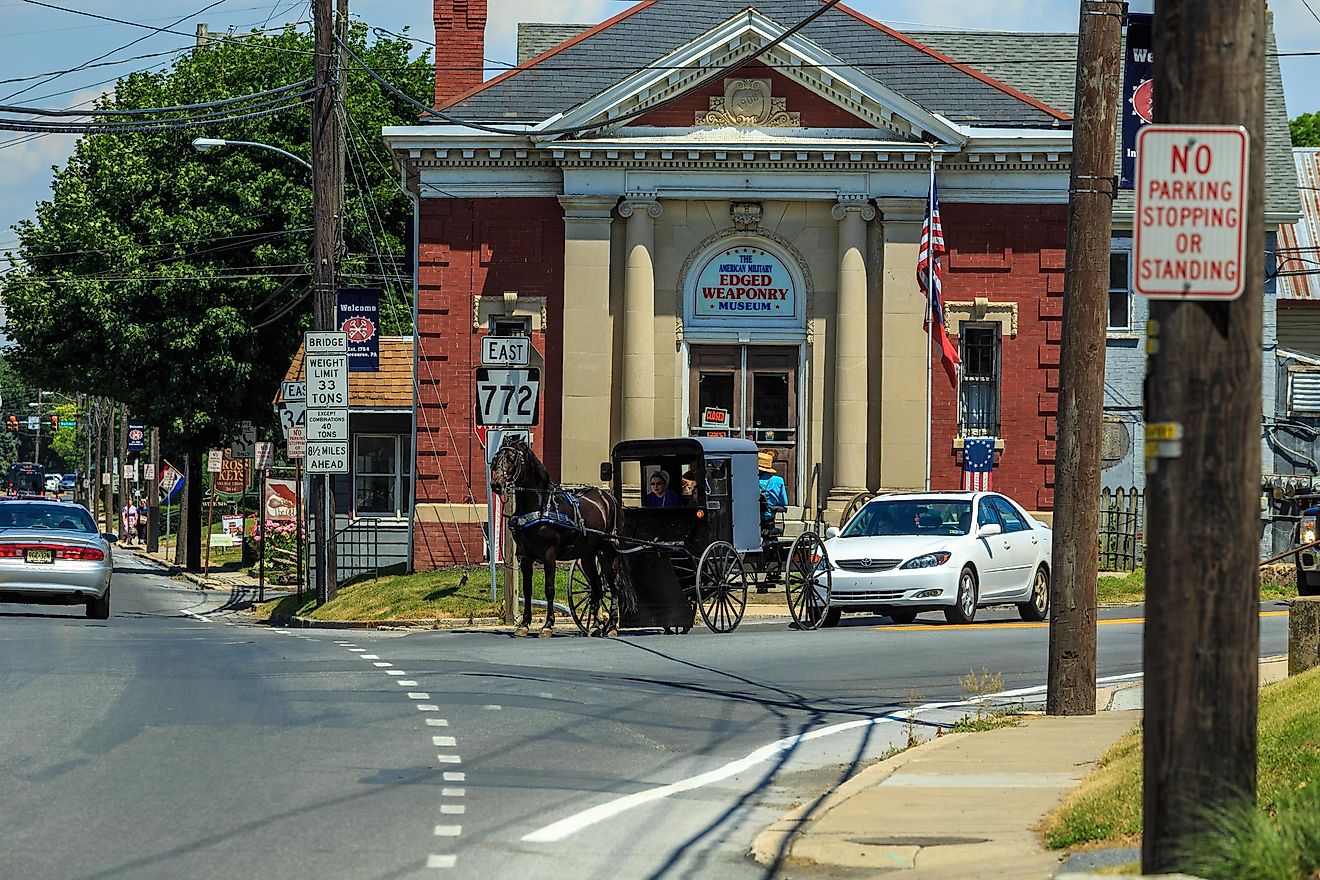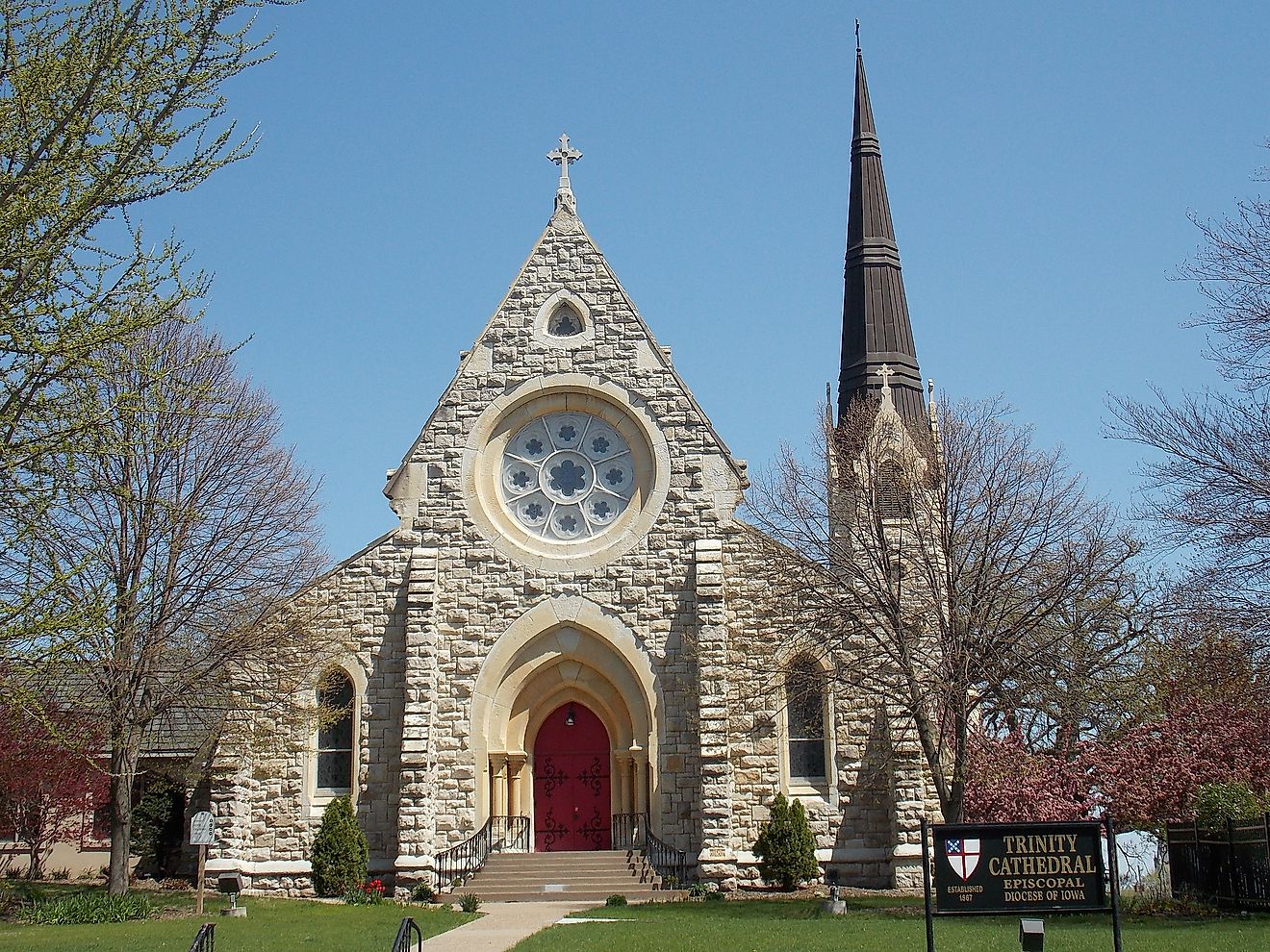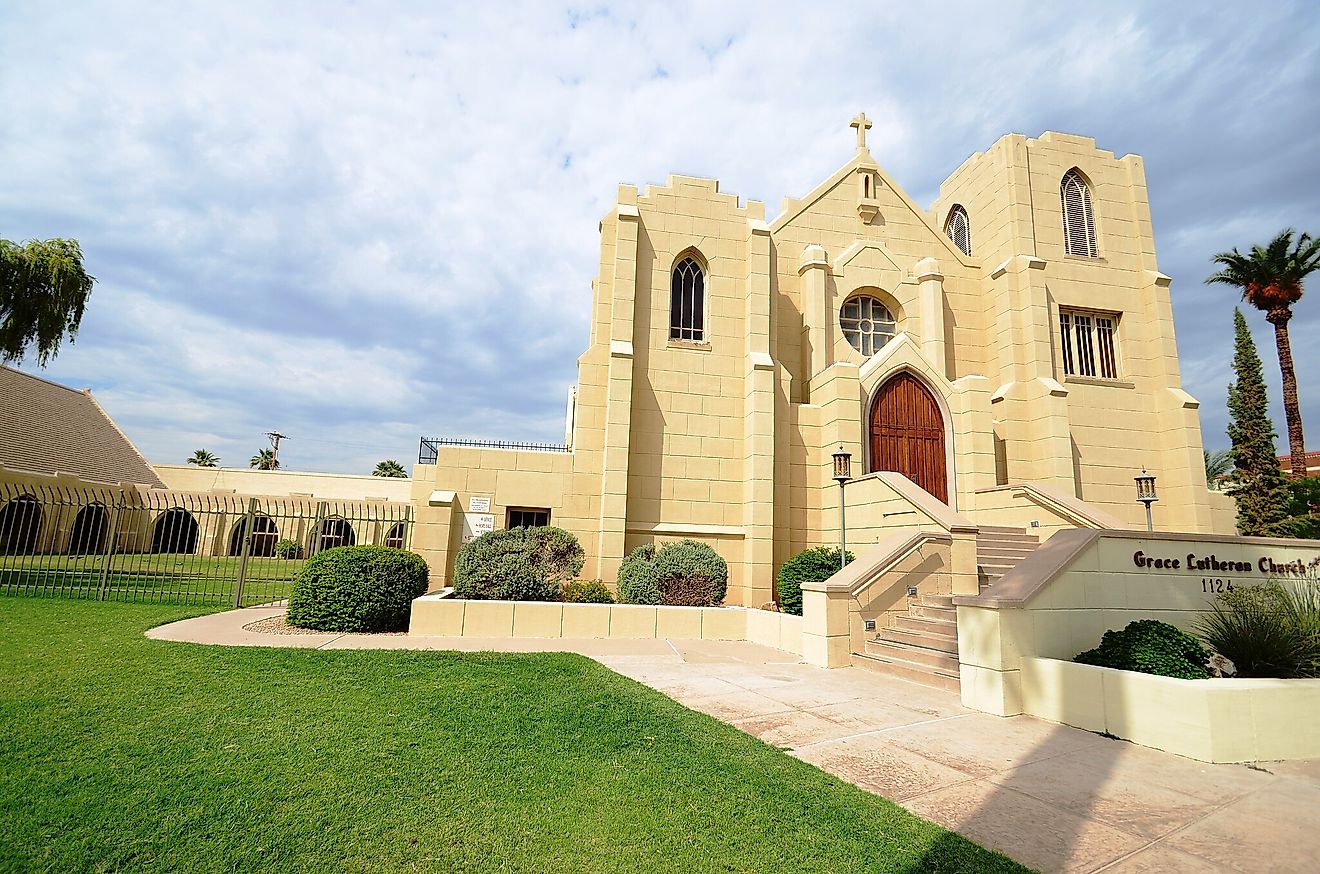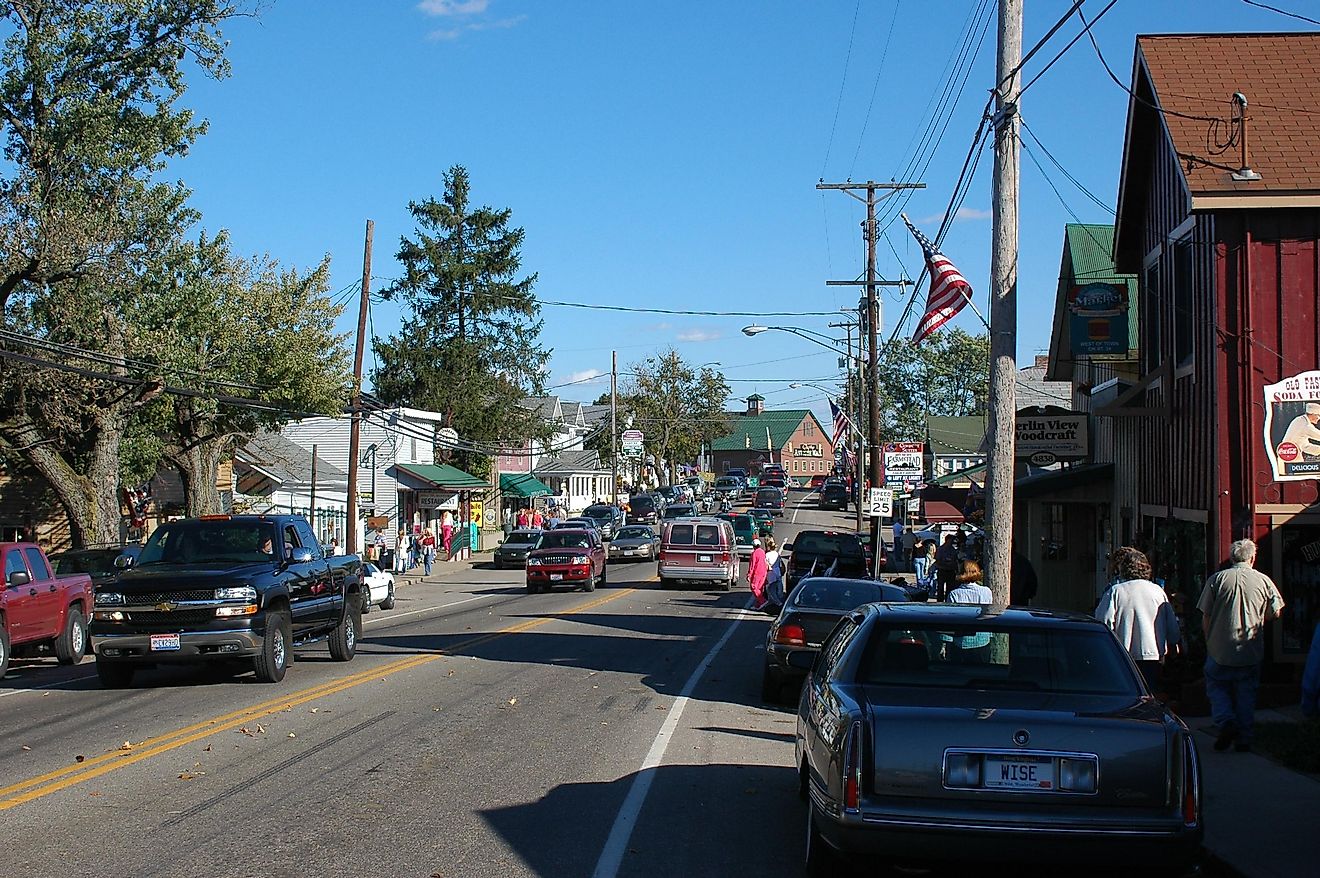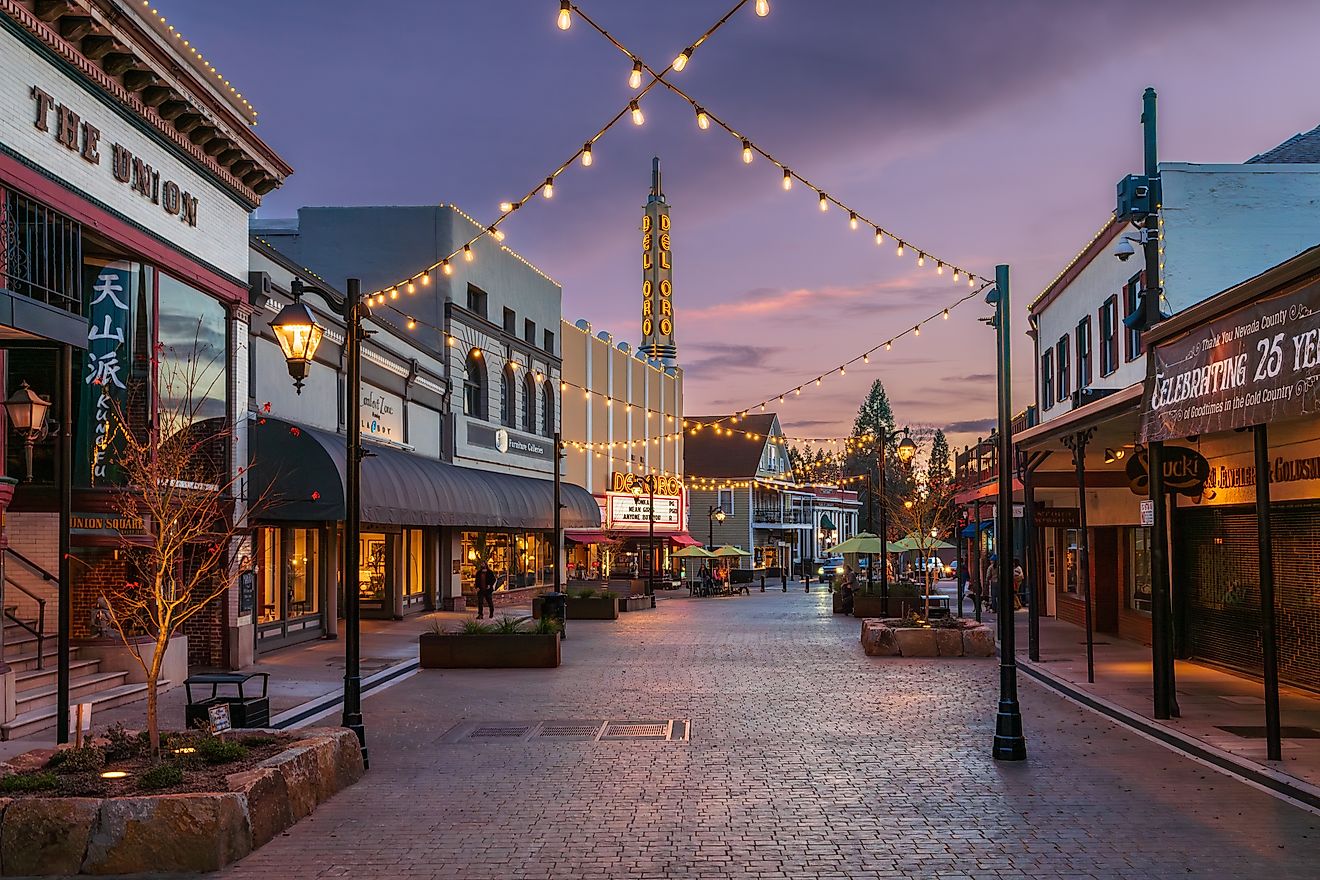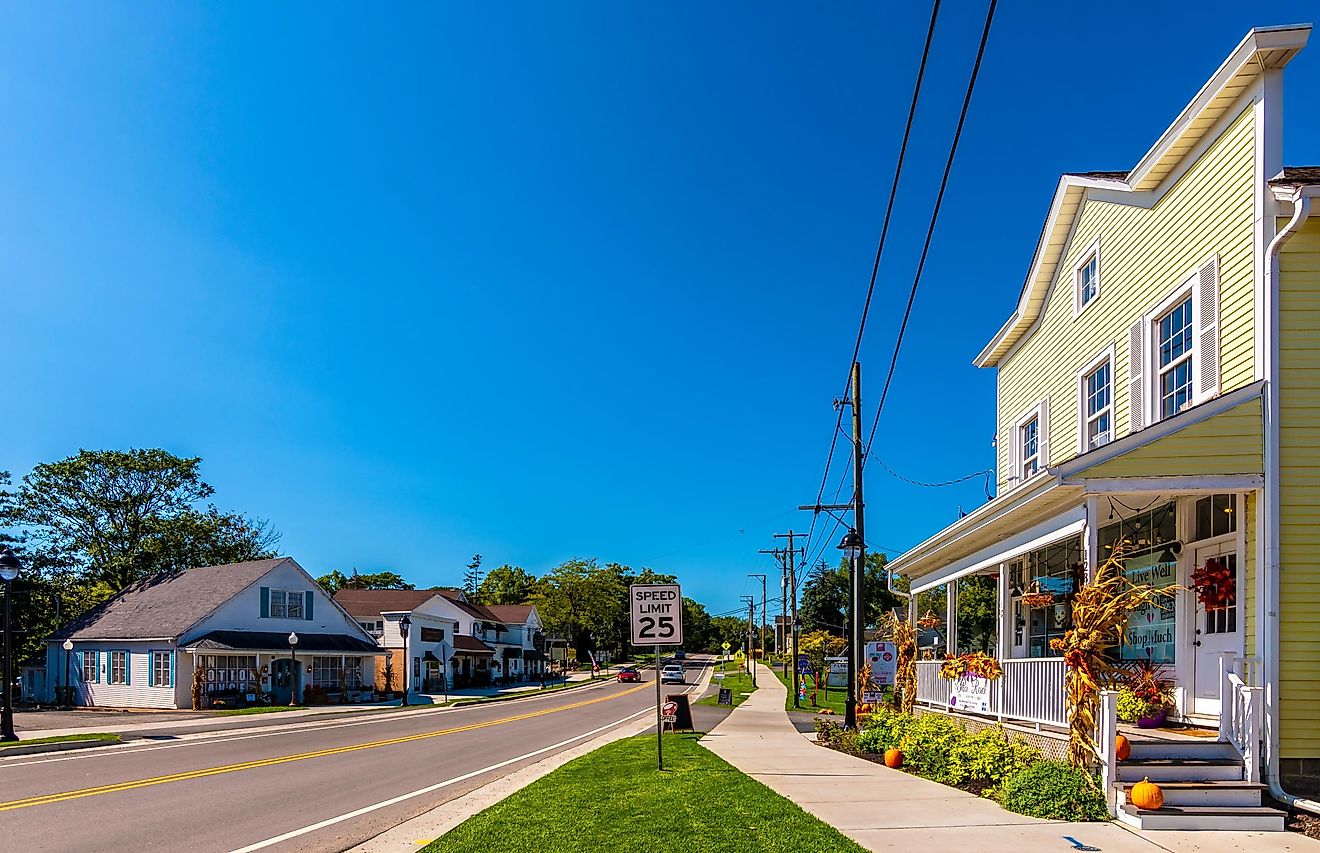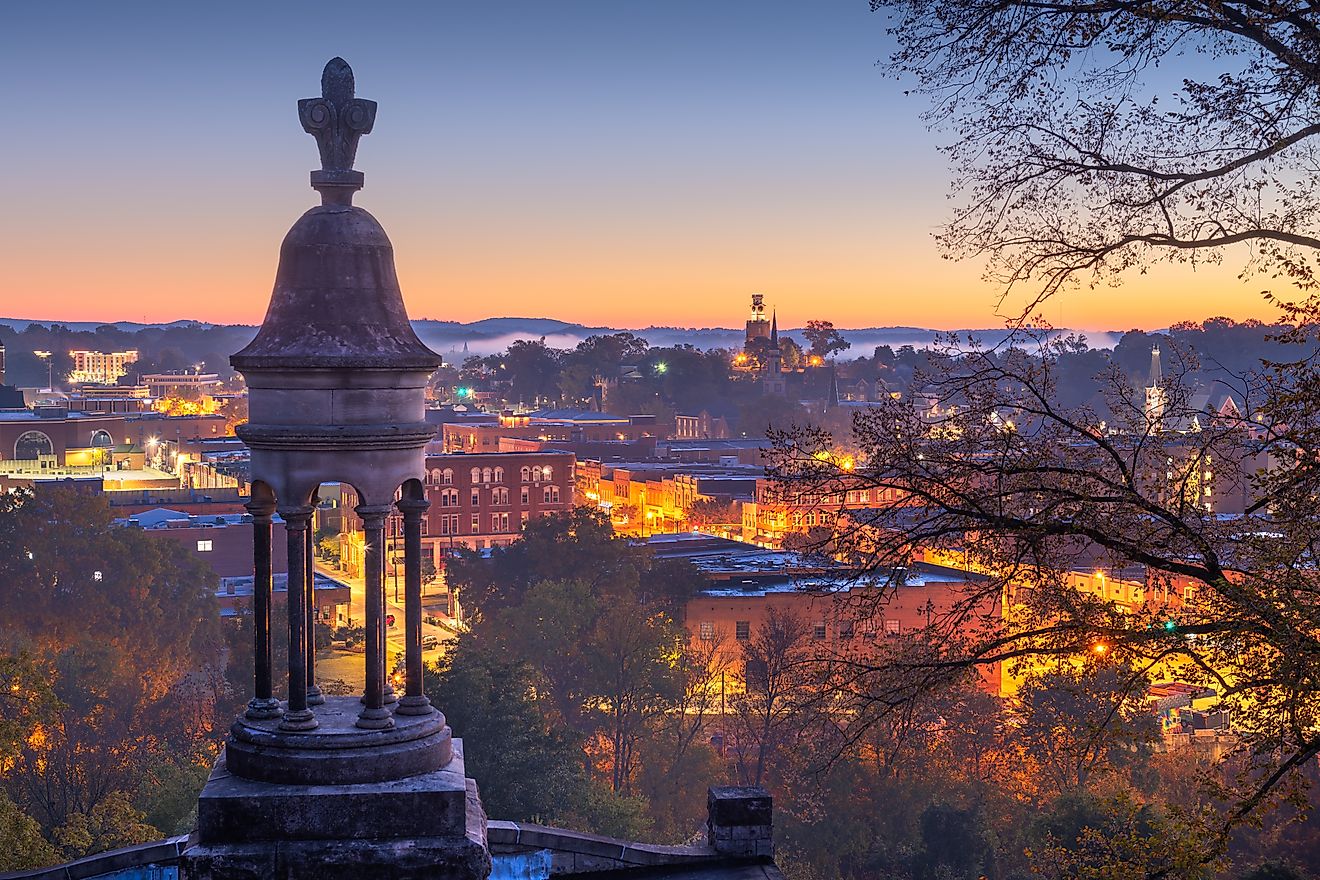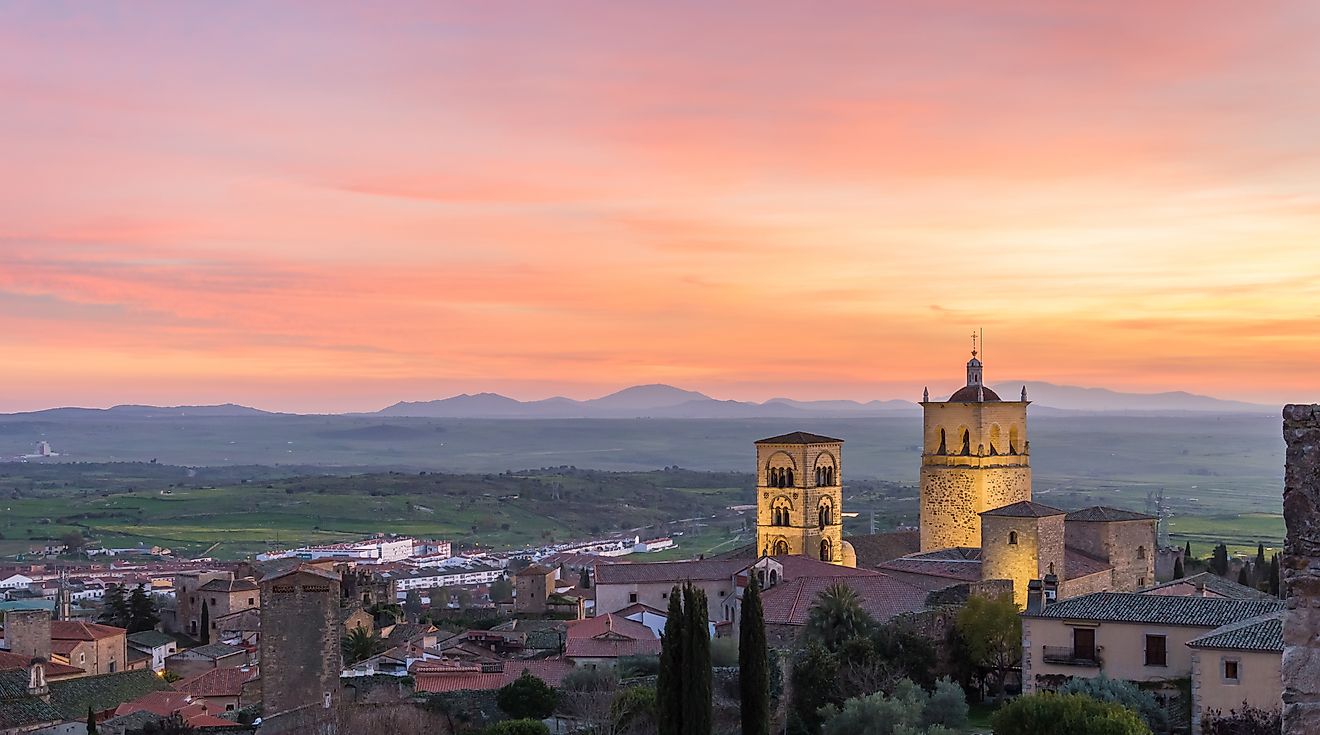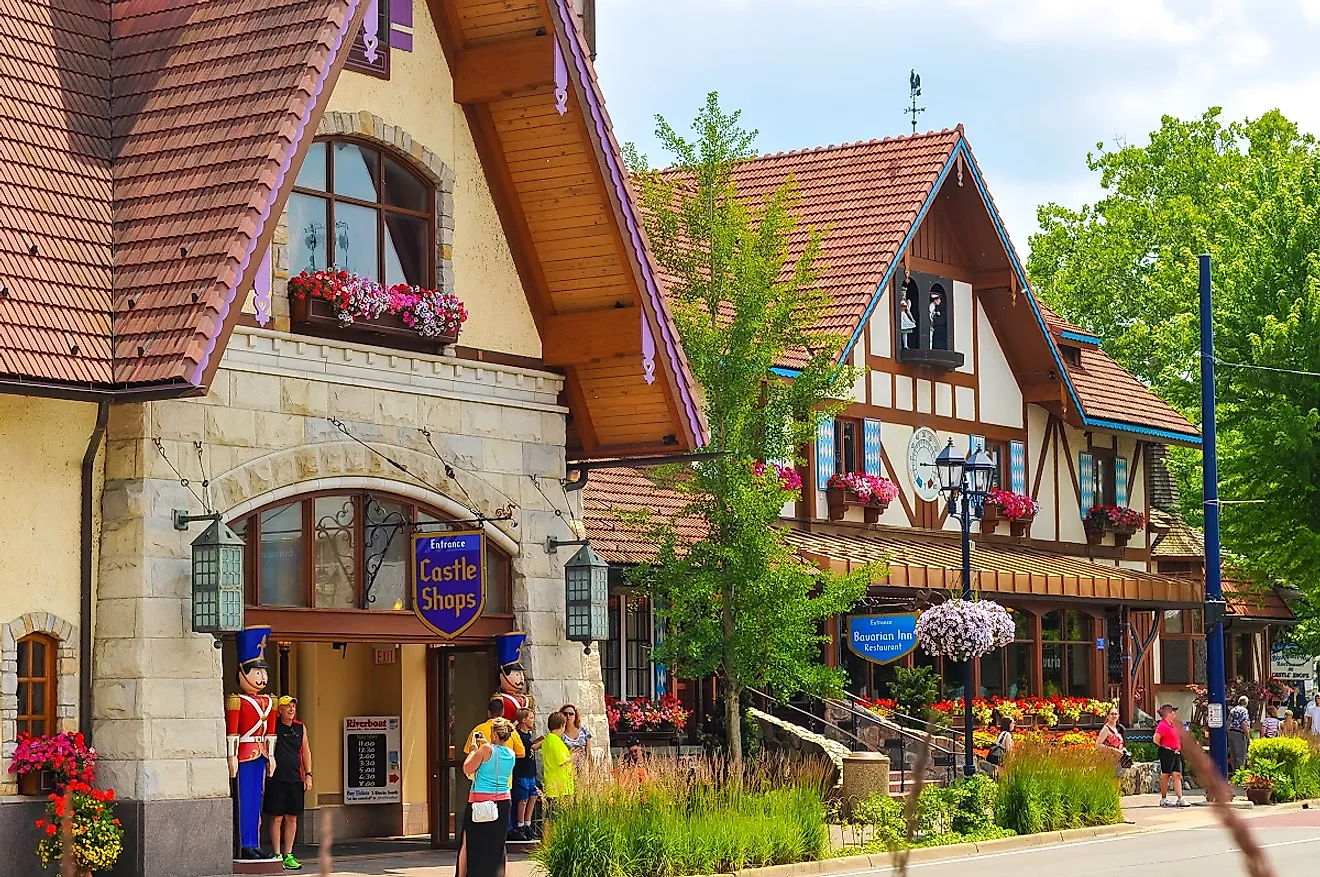
10 Michigan Towns With A Slower Pace Of Life
Michigan is divided in terms of its geography, but also overall energy. The big blue-collar cities, mega-highways, and magnetic summer beach towns of the Lower Peninsula are contrasted by the isolated, forested, and unpopulated expanses of the Upper Peninsula. Naturally, those seeking a slower pace of life would be wise to head north. But with that said, the southern section of the Great Lake State does have its hidden, or at least easy-going, gems. So let's scan both land masses (and corresponding islands) for the most relaxed small towns Michigan has to offer.
Mackinac Island
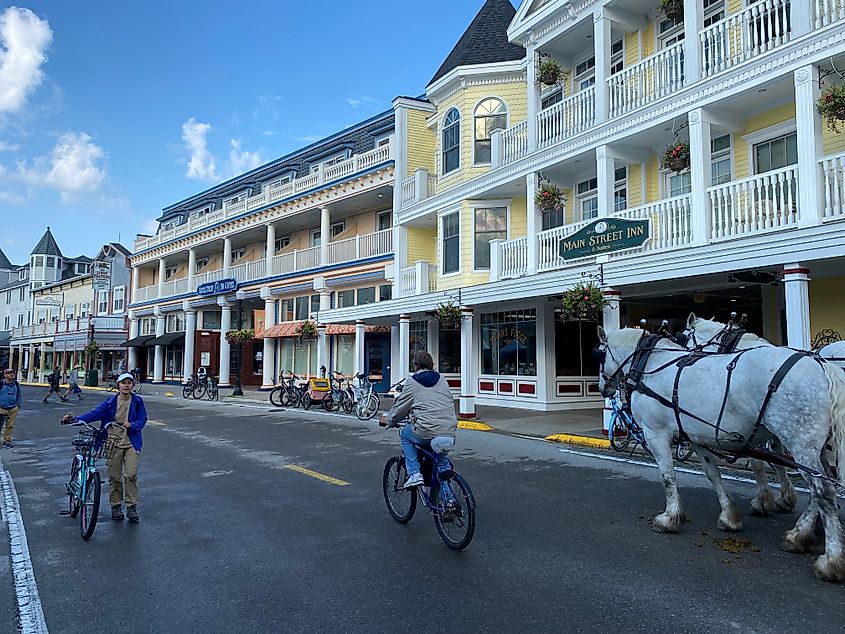
This anachronistic island may draw a hefty fair-weather crowd, but seeing as the only way to get around is via horse-drawn carriage, single-speed bikes, or on foot, Mackinac Island is the ultimate antidote to hustle culture. The Victorian village surrounding the ferry terminals enshrines the religious, Indigenous, and military history of this Lake Huron rock, and other than its modern tourist accents, still looks straight out of the mid 19th century. On the hill above, Fort Mackinac (staffed by period appropriate actors) stands as stalwart as ever. And beyond that, the rest of the island, roughly 80%, in fact, is part of Mackinac Island State Park — full of hiking trails, paved bike paths, historical landmarks, enigmatic natural formations, and large swaths of undisturbed forest.
Marquette
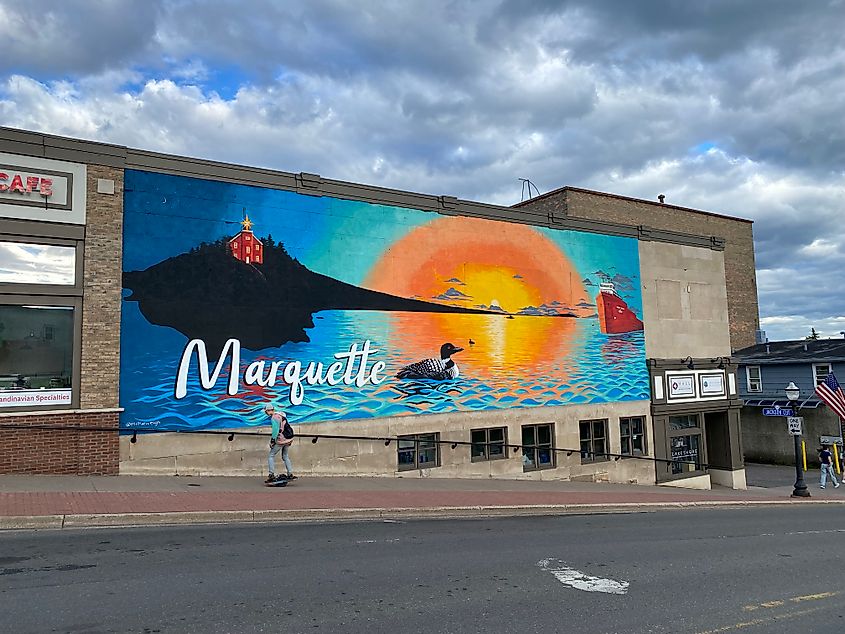
One of the livelier places on the Upper Peninsula is that of Marquette. But its appealing infrastructure and steady supply of passersby does nothing to detract from its easy-going nature. Marquette is all about dining in good company, some light shopping at its string of boutiques, and venturing into the tamed nature around its periphery. During my last tour of this shoreline city I beelined to Presque Isle Park for a late-afternoon hike past the old Ore Dock, black rock cliffs, and secret coves. Appetite acquired, I then made for Blackrocks Brewery, where I was met with food trucks and live music - all the more reason to settle in for a while. If you have some time to spare (of course you do, given the theme of this article), head for a stroll past the stately brick buildings of Marquette's spacious downtown, noting the intermittent street murals, ending down at the waterfront where humble boats can be seen anchored in the harbor next to the Lower Ore Dock.
Calumet
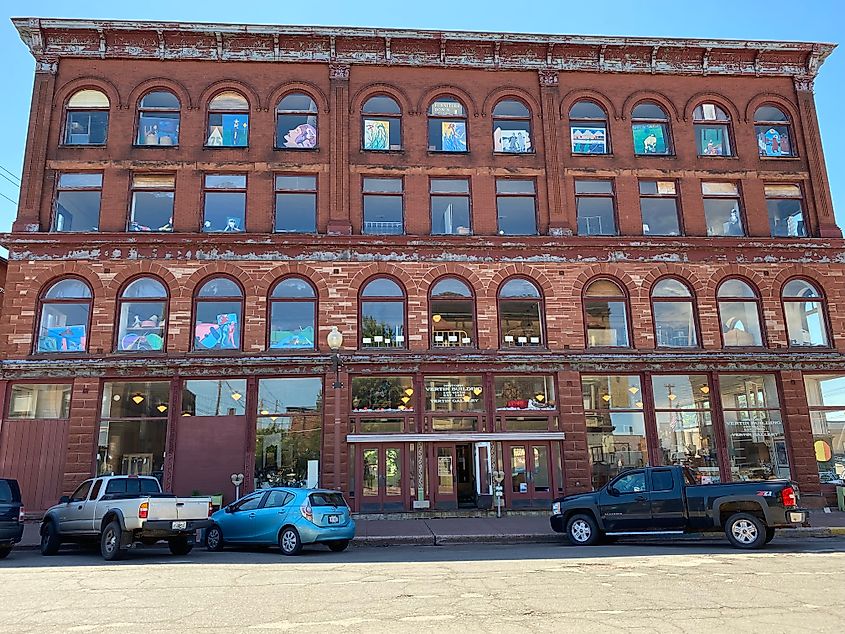
Curious about Michigan's copper mining history? Then continue mid-way up the Keweenaw Peninsula to the antiquitous town of Calumet. The extensive, two-story visitor center for the Keweenaw National Historical Park invites you to take your time digesting the artifacts, newspaper clippings, short documentaries, and artwork pertaining to Calumet's storied past. The Copper boom and corresponding bust shaped this curious part of the Upper Peninsula, leaving behind opulence, such as The Calumet Theatre, and the echoes of tragedy, such as the Great Italian Hall Disaster of 1913, which left 73 dead (mostly kids). The rest of Calumet is soaked in sepia tones, owing to its surplus of weathered brick structures. Some buildings have been abandoned, while others have held onto their saloon status, or converted to gift shops, coffee houses, or museums.
Copper Harbor

The Upper Peninsula is already one of the more isolated parts of the contiguous United States, so it makes sense that only 100 permanent residents and a modest supply of tourists would find their way all the way up to Copper Harbor — Michigan’s northernmost settlement. Perched at the top of the fingerlike Keweenaw Peninsula, which juts off of the UP and into the deep and pure waters of Lake Superior, this quirky, unincorporated community is all about slowing down and appreciating the abundant wilderness. The mainland offers hiking trails through groves of giant cedars, world-class mountain biking routes, and arresting views from atop Brockway Mountain. Those drawn to the water can paddle along the lush and expressive shoreline, or board the 4-hour ferry to Isle Royale National Park — one of the least visited, and minimally developed (the two go hand in hand) national parks in the lower 48.
Empire
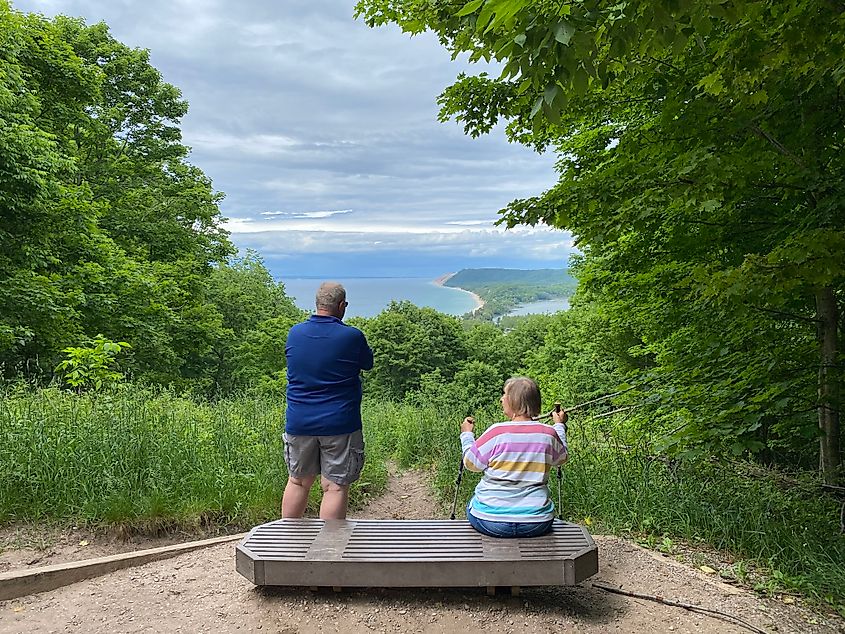
After indulging in the louder beach towns of Michigan's Lower Peninsula, Sleeping Bear Dunes National Lakeshore is the ideal place to change pace. The headquarters for this lengthy sandy sanctuary (and associated Manitou Islands) is Empire - an understated village near the southern terminus. Here, visitors can get a taste of what awaits throughout this scenic stretch of eastern Lake Michigan by hiking the Empire Bluff Trail. A gentle but sustained ascent through beech-maple forest is paid off with panoramic views of the Great Lake, South Manitou Island, and the shoreline's 460-foot-tall namesake attraction. Back in "downtown," patient pedestrians can peruse the couple of galleries, vibrant library, surf shop, ice cream cafe, antique dealer, and unpretentious eatery. And don't forget about the Sleeping Bear Dunes visitor center, where maps, day passes, and travel tips can all be acquired.
Munising
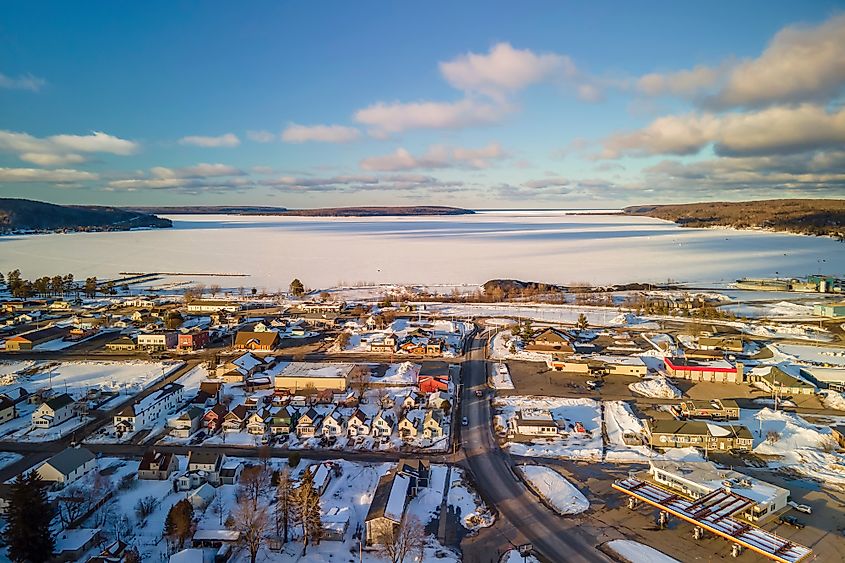
While we're on the subject of basecamps for national lakeshores, the small waterfront city of Munising gives visitors a chance to explore Pictured Rocks National Lakeshore. This 42-mile stretch of Lake Superior encapsulates over 100 miles of multi-use nature trails, 12 miles of wild Upper Peninsula beaches, five miles of juggernaut dunes, a series of waterfalls and historic lighthouses, and of course, the Pictured Rocks themselves. The lakeshore's enigmatic name refers to the colorful streaks stained into the 50 to 200-foot cliffs by mineral deposits and seeping groundwater. Adding extra acreage to the already extensive playground is the Grand Island National Recreation Area (just beyond Munising Bay), and the Hiawatha National Forest, which sprawls in every other direction. Munising offers scenic cruises, glass bottom shipwreck tours, kayak rentals, and an array of cozy inns, B&Bs, and campgrounds to help facilitate the contemplative adventures.
Leland
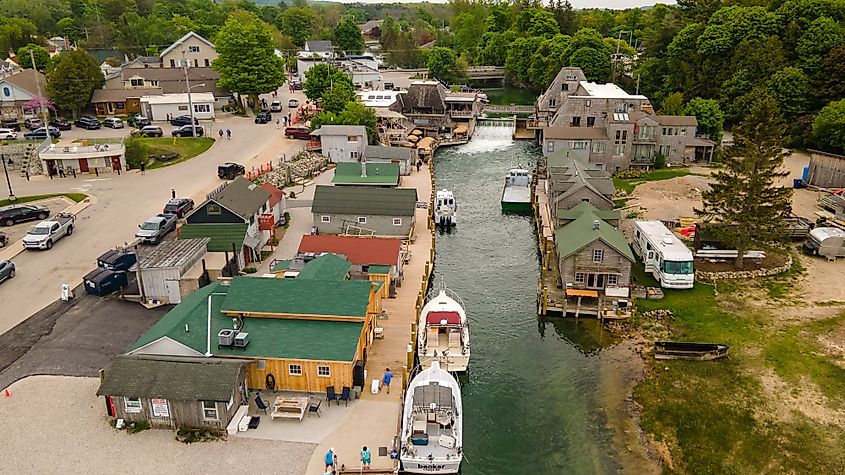
Another town important to the Sleeping Bear Dunes National Lakeshore that is also a charming destination unto itself is that of Leeland. With ferries servicing both North and South Manitou Island, this historic fishing village serves as a natural end point for northbound sightseers. Plus, being sandwiched between Lake Michigan and Lake Leelanau, and located in the heart of the Leelanau Peninsula - one of Michigan's premier wine regions (with over 20 award-winning wineries in short succession) - there are plenty of relaxing ways to pass the time in these parts. But the focal point of it all is Leland's Fishtown, where fishing shanties, smokehouses, fish tugs, and charter boats line the docks on both sides of Leland River, right before it meets the Great Lake.
Petoskey
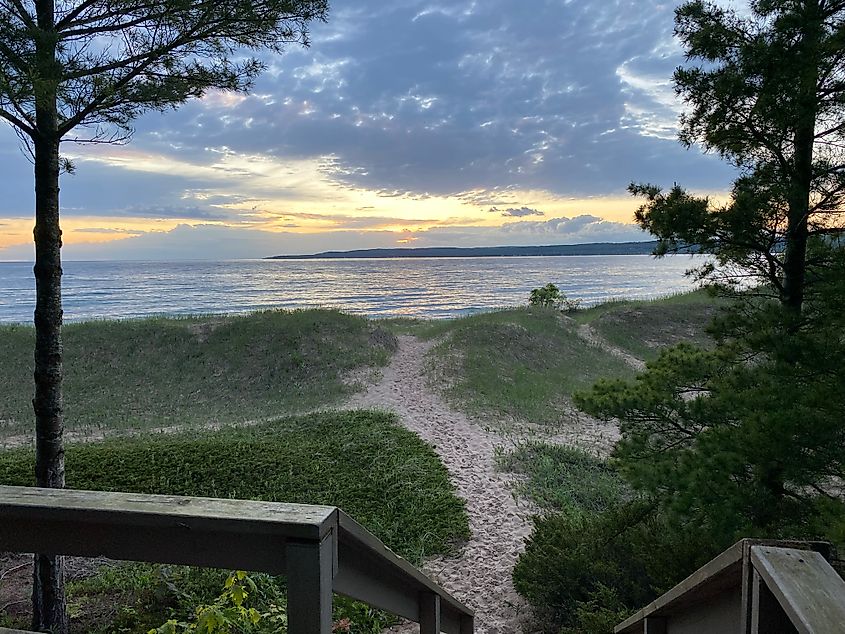
Sheltered within Little Traverse Bay (a wing of northeastern Lake Michigan), Petoskey is a four-season respite for slow-going travelers. This seat of Emmet County is known for its Gaslight Shopping District - a downtown strip with over 170 shops and restaurants, Ernest Hemingway historic sites (the famous American novelist lived here for a brief period), the Crooked Tree Arts Center, and its plethora of choose-your-own-adventure outdoor recreation (from cycling the Little Traverse Wheelway in the summer, to mushroom foraging in the spring, to skiing and skating in the winter). But Petoskey's premier relaxed attraction is perhaps its namesake state park just a few miles north of town. I came across this gem while doing a van life tour and was greeted by friendly fellow travelers atop one of the beachside platforms where we all watched a lovely sunset.
St. Joseph
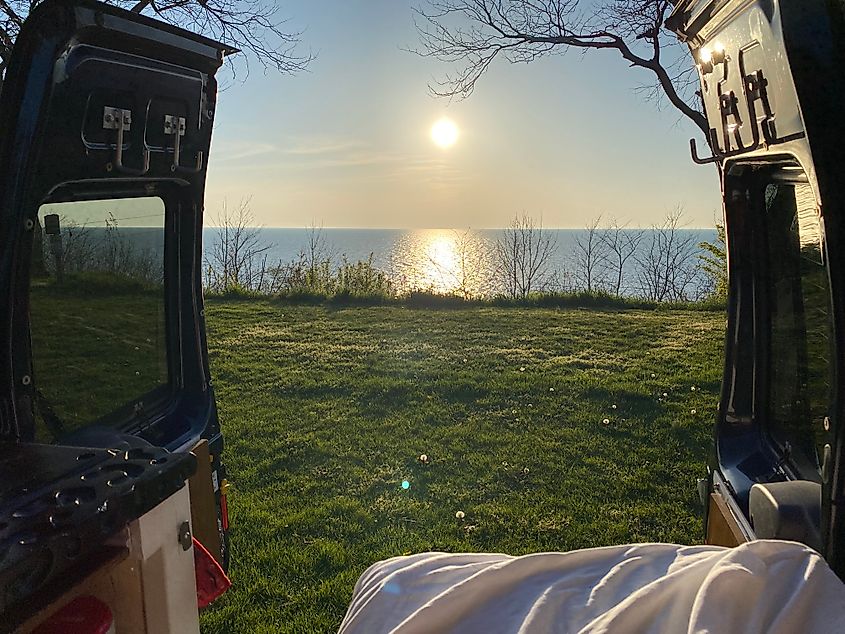
Speaking of Great Lake sunsets, that same cross-country roadtrip brought me through St. Joseph on the southern reaches of Lake Michigan. Here, at the aptly named Lookout Park, a modest crew of contemplative motorists gathered around to watch the sun dip down right beside the Chicago skyline while gorging on tacos and quesadillas from the perfectly-placed Mexican food truck. St. Joe is also one of the Lower Peninsula's quintessential beach towns, thanks to its seven sandy stretches, photogenic, lighthouse-topped pier, and ideal blend of rainy-day attractions (i.e. brewery, children's museum, galleries, etc.). St. Joseph is also just a stone's throw north of Warren Dunes State Park - a treasure trove of sandy mountains (bring your snowboard!).
Frankenmuth
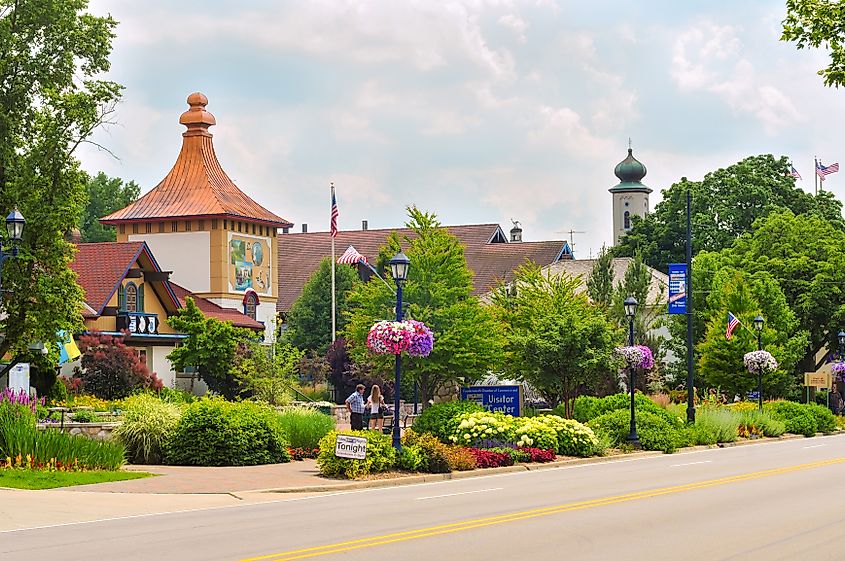
Similar to Mackinac Island, Frankenmuth transports tourists to another time and place. Known as "Michigan's Little Bavaria," this inland enclave enshrines German heritage through its authentic architecture, cuisine, and annual events. Make no mistake, Frankenmuth is a happening place, but everything is geared towards fun. Truly, there is no room for everyday stressors here. Take your pick of a riverboat cruise, a circuit on the PedAle Trolley, a ride on the Golden Ticket Trolley or horse-drawn carriage over the iconic covered bridge and past some of Frankenmuth's best riverside attractions, or slow things down even further with a self-guided tour through the Frankenmuth Historical Museum (housed in an elegant, red-bricked hotel, circa 1905). However you choose to explore this standout city, end the day with a stein and schnitzel at any of the delicious Bavarian restaurants.
Parting Thoughts
For some, Michigan might connote the hustle and bustle of Detroit, or the packed beaches of Grand Haven. But there are slower going sides to the Great Lake State. To find these, put an extra tank of gas in the car and push north to the lesser known shorelines of the Lower Peninsula or forgotten towns of the Upper Peninsula, board a ferry for the various timeless islands, or take a closer look at the seemingly-crowded, but nevertheless chilled out cities scattered throughout.
